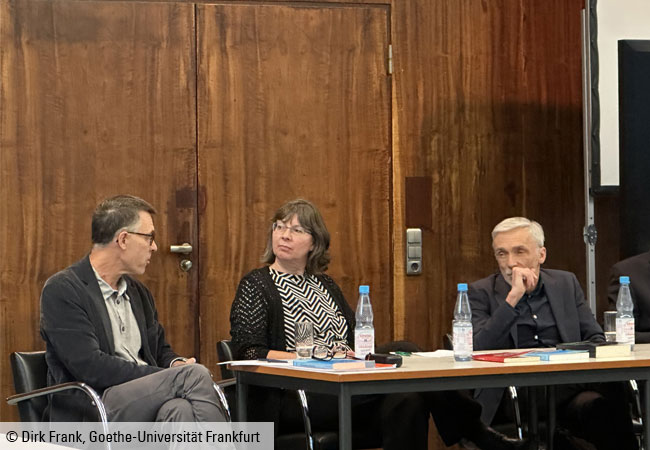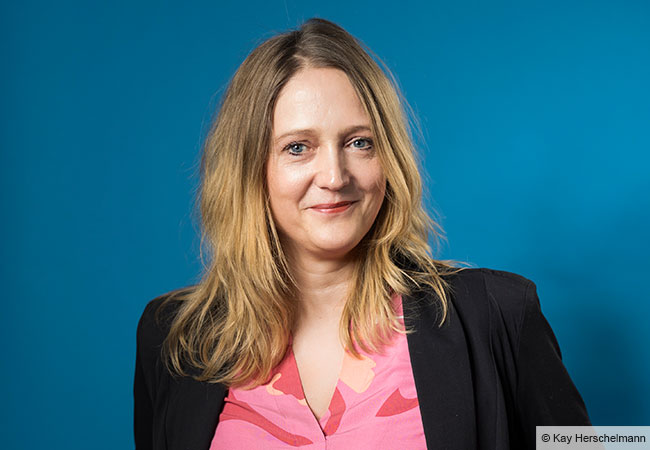
An extended application of the CRISPR-Cas technology has been made possible by Dr Manual Kaulich’s team at Goethe University: the new 3Cs multiplex technique allows the effect of genetic changes in any two genes to be studied simultaneously in cell cultures. This can provide important clues for the development of therapies to treat cancer or diseases of the nervous and immune systems.
Cancer and many other diseases are based on genetic defects. The body can often compensate for the defect of one gene; it is only the combination of several genetic errors that leads to the clinical picture. The 3Cs multiplex technique based on CRISPR-Cas technology developed at Goethe University Frankfurt now offers a way to simulate millions of such combinations of genetic defects and study their effects in cell culture. These „gene scissors“ make it possible to introduce, remove and switch off genes in a targeted manner. For this purpose, small snippets of genetic material („single guide RNA“) are used as „addresses“ that guide the gene scissors to specific sections of the DNA, where the gene scissors then become active.
The scientists from the Institute of Biochemistry II at Goethe University have expanded the 3Cs technique that they developed and patented three years ago. 3Cs stands for covalently-closed circular-synthesised, because the RNA elements used for CRISPR-Cas are generated with the help of a circular synthesis and are thus distributed more uniformly. With a whole library of such RNA rings, any gene in a cell can be specifically addressed in order to change it or switch it off.
The new 3Cs multiplex technique now even allows the simultaneous manipulation of two genes in one cell. Dr. Manuel Kaulich explains: „We can produce ‚address‘ RNA libraries for all conceivable two-gene combinations. This allows up to several million combinations to be tested simultaneously in one experiment.“
Until now, the cost and effort of such experiments was very high; the research group’s new technique reduces it, including costs, by a factor of ten. This is because the team can produce the address libraries very uniformly and in high quality thanks to the new 3Cs multiplex technique. „Due to the mediocre quality of the CRISPR-Cas libraries previously available, very large experiments always had to be carried out to statistically compensate for any errors that arose,“ says Kaulich.
Using the example of various genes involved in degradation processes, the research group demonstrated the potential of the new 3Cs multiplex technique: they examined almost 13,000 two-way combinations of genes that are responsible for recycling processes (autophagy) in the cell. With their help, the cell breaks down and recycles „worn-out“ cell components. Disturbances in autophagy can trigger cell proliferation.
„Using the 3Cs multiplex technique, we were able to identify, for example, two genes involved in autophagy whose switching off leads to an uncontrolled growth of cells,“ explains Kaulich. „These are precisely the autophagy mutations that occur in every fifth patient with squamous cell carcinoma of the lung. In this way, we can search very efficiently in cell culture experiments for genes that play an important role in cancer, and also in diseases of the nervous and immune systems, and that are suitable as possible targets for therapies.“
The Goethe University research group has applied for a patent for its developments through the university’s technology transfer subsidiary Innovectis. The start-up company Vivlion GmbH, spun off from the Institute of Biochemistry II with the participation of Manuel Kaulich, is already offering the use of this technology on the market.
Publication: Valentina Diehl, Martin Wegner, Paolo Grumati, Koraljka Husnjak, Simone Schaubeck, Andrea Gubas, Varun Jayeshkumar Shah, Ibrahim H Polat, Felix Langschied, Cristian Prieto-Garcia, Konstantin Müller, Alkmini Kalousi, Ingo Ebersberger, Christian H Brandts, Ivan Dikic, Manuel Kaulich, Minimized combinatorial CRISPR screens identify genetic interactions in autophagy. Nucleic Acids Research, gkab309, https://doi.org/10.1093/nar/gkab309











